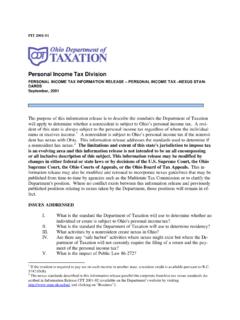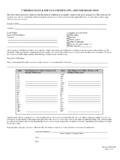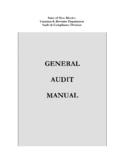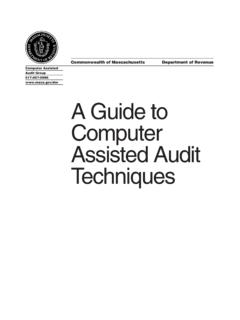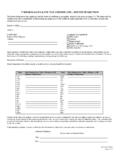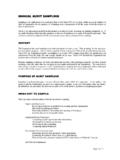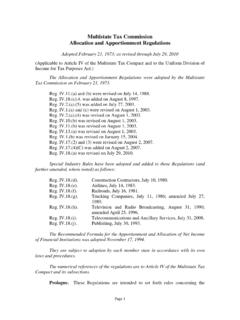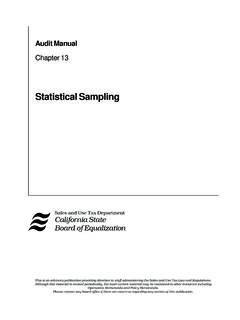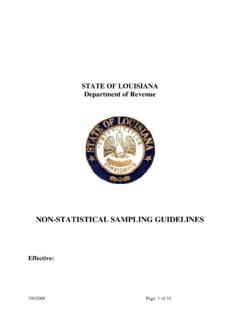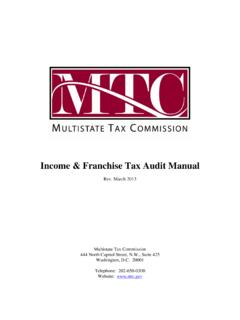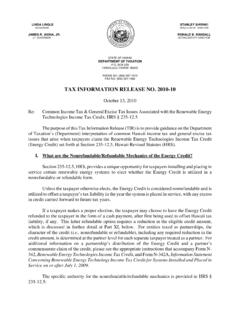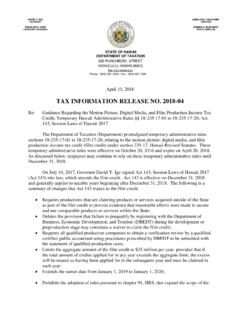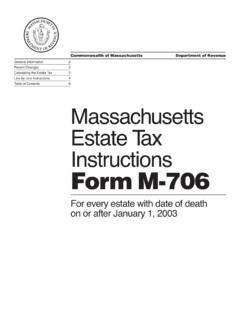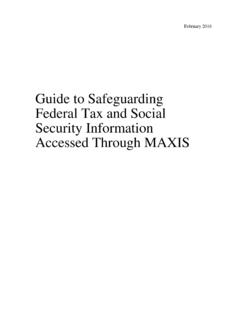Transcription of Personal Income Tax Division - mtc.gov
1 PIT 2001-02 Personal Income Tax DivisionPERSONAL Income TAX information release PASS-THROUGH ENTITY TAX NEXUSSTANDARDSS eptember, 2001 The purpose of this information release is to describe the standards the Department of Taxationwill apply to determine whether a pass-through entity has nexus with Ohio, thus possibly makingthe entity subject to the pass-through entity The limitations and extent of this state's ju-risdiction to impose tax is an evolving area and this information release is not intended tobe an all encompassing or all inclusive description of this This information re-lease may be modified by changes in either federal or state laws or by decisions of the Court, the Ohio Supreme Court, the Ohio Courts of Appeals, or the Ohio Boardof Tax Appeals.
2 This information release may also be modified and reissued to incorporatenexus guidelines that may be published from time-to-time by agencies such as the Multistate TaxCommission or to clarify the Department's position. Where no conflict exists between this in-formation release and previously published positions relating to nexus taken by the Department,those positions will remain in exempt pursuant to Ohio Revised Code (hereinafter ) , the pass-throughentity tax applies to every qualifying entity having at least one qualifying ADDRESSEDI.
3 What is the standard the Department of Taxation will use to determine whether anout-of-state qualifying entity is subject to Ohio's pass-through entity tax?II. What activities by an out-of-state qualifying entity create nexus in Ohio?III. Are there any safe harbor activities where nexus might exist but where the De-partment of Taxation will not currently require the filing of a return and the pay-ment of the pass-through entity tax?IV. What is the impact of Public Law 86-272?V. Are these standards prospective or retroactive?
4 VI. When is this information release effective? 1 The pass-through entity tax became effective on January 1, The nexus standards described in this information release are identical to the corporate franchise tax nexus stan-dards described in information release CFT 2001-02 (available on the Department s website by and clicking on Business ).2 VII. What are the filing requirements for an out-of-state qualifying entity subject toOhio's taxing jurisdiction?
5 VIII. Once nexus is established, how long does the filing requirement last?IX. Can an unregistered out-of-state qualifying entity subject to these nexus guide-lines request a Voluntary Disclosure Agreement?DEFINITIONSThe following definitions are used in this information release :A. Qualifying entity means a qualifying pass-through entity or a qualifying Out-of-state qualifying entity means a qualifying entity not organized, formed or char-tered under the laws of Qualifying investor means an investor as defined in (A)(9).
6 D. Qualifying pass-through entity means a pass-through entity as defined in E, below, ex-cluding a person described in section 501(c) of the Internal Revenue Code, a partnershipwith equity securities registered with the United States securities and exchange commis-sion under section 12 of the securities exchange act of 1934, as amended, or a person de-scribed in Division (C) of section of the Revised "Pass-through entity" means a corporation that has made an election under subchapter Sof Chapter 1 of Subtitle A of the Internal Revenue Code for its taxable year under thatCode, or a partnership, limited liability company, or any other person, other than an indi-vidual, trust, or estate, if the partnership, limited liability company.
7 Or other person is notclassified for federal Income tax purposes as an association taxed as a Qualifying trust means a trust subject to subchapter J of the Internal Revenue Codethat, during any portion of the trust s qualifying taxable year, has Income or gain from theacquisition, management, ownership, use, or disposition of tangible Personal property lo-cated in this state at any time during the trust s qualifying taxable year or real propertylocated in this state. Qualifying trust does not include a person described in section501 (c) of the Internal Revenue Code or a person described in Division (C) of of the Revised "Related member" means a person that, with respect to the qualifying entity during all orany portion of the taxable year, is any of the following:1.
8 An individual stockholder, or a member of the stockholder's family enumerated insection 318 of the Internal Revenue Code, if the stockholder and the members of thestockholder's family own, directly, indirectly, beneficially, or constructively, in theaggregate, at least fifty per cent of the value of the taxpayer's outstanding stock; or2. A stockholder, or a stockholder's partnership, estate, trust, or corporation, if thestockholder and the stockholder's partnerships, estates, trusts, and corporations own3directly, indirectly, beneficially, or constructively, in the aggregate, at least fifty percent of the value of the taxpayer's outstanding stock; or3.
9 A corporation, or a party related to the corporation in a manner that would require anattribution of stock from the corporation to the party or from the party to the corpora-tion under (I)(12)(c)(iv), if the taxpayer owns, directly, indirectly, bene-ficially, or constructively, at least fifty per cent of the value of the corporation's out-standing stock; or4. A component member as defined in section 1563(b) of the Internal Revenue Code; or5. A person to or from whom there is attribution of stock ownership in accordance withsection 1563(e) of the Internal Revenue Code except, for purposes of determiningwhether a person is a related member, "twenty per cent" shall be substituted for "5 percent" wherever "5 per cent" appears in section 1563(e) of the Internal Revenue Day means a calendar day or any portion DISCUSSEDI.
10 What is the standard the Department of Taxation will use to determine whether anout-of-state qualifying entity is subject to Ohio's pass-through entity tax?Ohio law provides that an out-of-state qualifying entity is subject to the Ohio pass-through entity tax under any set of circumstances allowed by the Constitution of theUnited States. Specifically, sets forth the legal standard used by the De-partment of Taxation to determine whether an out-of-state qualifying entity is subject toOhio pass-through entity tax.
